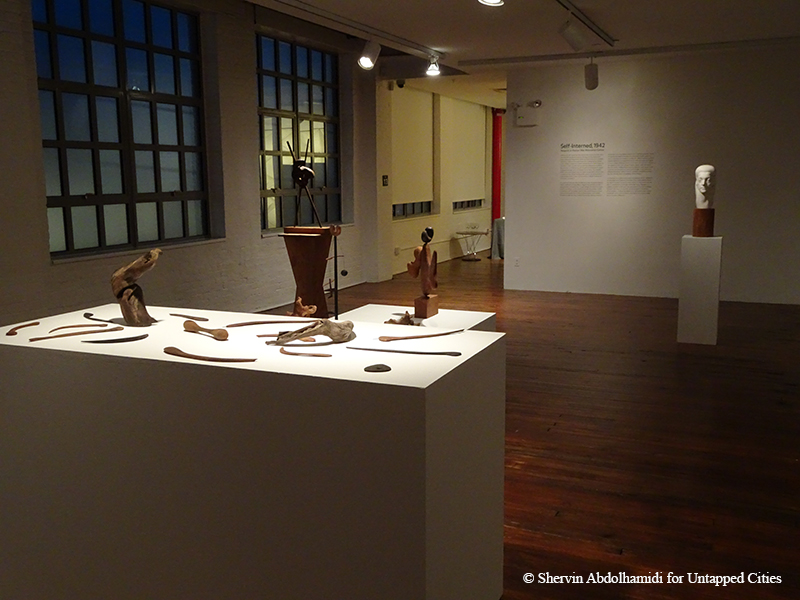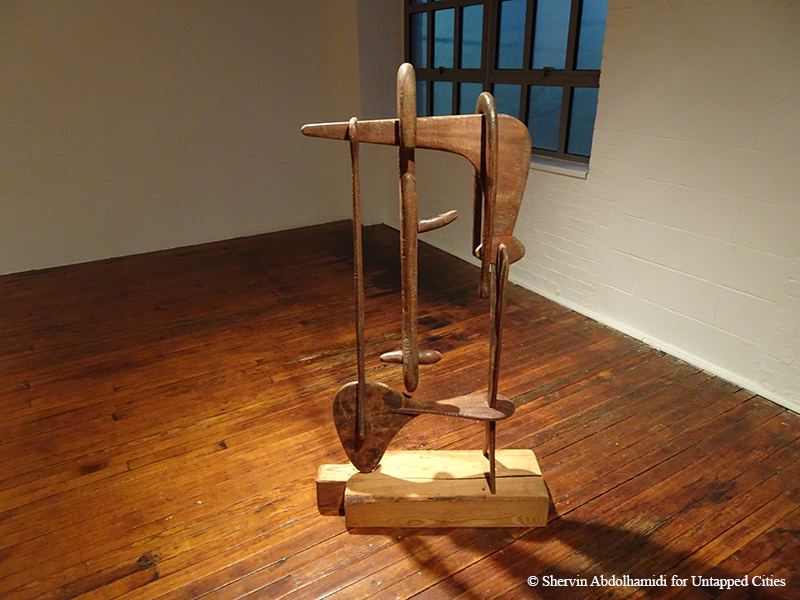February 19th marks the 75th anniversary of the infamous presidential directive that gave the War Department (now Department of Defense) the unconditional authority to establish martial law in whichever parts of the United States it deemed necessary. Subsequent to Japan’s devastating surprise attack on Pearl Harbor, the order was immediately utilized to mandate the restriction of movement, and ultimately the internment of anyone of Japanese heritage within the Western United States. Thus followed a harrowing period of widespread animosity against Japanese-Americans in our country.
In the midst of all of this, there was one man who became of the few in history who deliberately subjected himself to internment. As a resident of New York, the Japanese-American artist Isamu Noguchi was exempt from internment. As a fairly successful artist—with the giant stainless steel relief that still adorns the façade of the former Associated Press Building at Rockefeller Center being one of his most prominent works until then—Noguchi was making portraits in California during the time between Pearl Harbor and the signing of Executive Order 9066; he was striving to make ends meet while he cultivated relationships and garnered attention for some of his other art.
Following the internment, Noguchi felt the desire to contribute to his community of displaced Japanese-Americans, to which he had never felt more connected. He hoped that by making the camp a more humane place, and by instilling in them a sense of community and connectedness—with art classes, baseball fields and other amenities—he could galvanize sentiments of patriotic Japanese-Americanism. Ergo, on May 12th, 1942 Noguchi entered the Poston War Relocation Center in the Arizona Desert, a selfless act in which he “willfully became part of humanity uprooted.”

It immediately became clear that Noguchi’s righteous sacrifice had been an idealistic, unfeasible endeavor. Contrary to the promises he’d been made, Noguchi received no support from the Poston officials, the War Relocation Authority, nor the War Department. Seeing that his efforts were futile, Noguchi attempted to extricate himself from the camp after only two months. However it would ultimately take seven to get out.
During this period of limbo, Noguchi accomplished as much as he could on the camp, roamed the desert, wrote to friends, worked on art—all while receding into a forlorn state of despair. Yet, despite the purported failure of his undertaking, this period of Noguchi’s life proved to be pivotal and critical to his development as an artist.
Internment, and the anguish that he endured molded his art, helped him establish the multidisciplinary, prismatic approach that became his greatest strength and liability, and continued to make him an avatar for contemporary artists. In a way the social issues that he encountered in internment established the underpinnings for much of his later art, which became explicitly political in some cases.

After settling in a new studio in New York, between 1942 and 1946 Noguchi worked on The World Is a Foxhole, Yellow Landscape, and This Tortured Earth—all highly allegorical, socially charged political objects.
Some other pieces such as Remembrance, and Mother and Child are more poignant and melancholic piece; there is an undertone of Noguchi’s wistful desire and failed attempt to connect and empathize with his fellow Japanese-Americans.

A collection of Noguchi’s art inspired by his internment has been compiled into the exhibit Self-Interned, 1942: Noguchi in Poston War Relocation Center on display at the Noguchi Museum in Long Island City, Queens. Located in a converted 1920s industrial building, the Noguchi Museum is considered one of Noguchi’s greatest achievements, and is to this day the only museum to be established by a living artist. The 27,000 square feet of exhibition space, situated over two stories, hosts a comprehensive collection of sculptures, models, plans for public projects, drawings, gardens, and also Akari light sculptures from one of the most critically acclaimed sculptors of the twentieth century.
The exhibit Self-Interned manifests Noguchi’s work before, in, and after Poston and his transition from his earlier figurative work to the modernistic style for which he became renowned. One of the first pieces in the exhibit—which is mostly chronologically set—is a portrait bust of Lily Zietz, a theater actress, which was the last piece that Noguchi worked on before entering internment. The piece is emblematic of the extravagant world of “boldface names” in which Noguchi was immersed in.
“We try to take the baseline of Poston and that experience and show to some extent the way Noguchi processed it and the way it stuck with him,” Curator Dakin Hart said on the exhibit. “The experience of the desert became a very fundamental part of his mental furniture and what we’re trying to do here is externalize that mental furniture.”
Many of the pieces made during, and immediately after internment are comprise of wood, which was one of the few readily available and workable materials in the camp. Other works made during the years to follow his release from internment include the politically inspired, This Tortured Earth (1942-43), and Yellow Landscape (1943), the latter of which insinuates the entire planet in the anti-Asian stereotyping that spread across the country after Pearl Harbor.

The exhibit also includes series of documents and letters that span the period of time immediately before and after the war. The collection includes documents such as a 1943 editorial published in The New Republic on the unrest in the camps, and a letter to Man Ray in which Noguchi describes the surreal nature of his position on Poston. The documents portray Noguchi as an unofficial national spokesperson for the Japanese-American community.
Self-Interned concludes with “Gateways” and “Deserts,” two collections of works dating from the mid-fifties to the mid-eighties that underscore the profound, enduring effects of Noguchi’s experience in internment on his art. Noguchi would joke for many years later how he was on a furlough, and might be recalled at any time. According to Dakin Hart, “[This] was just him getting at just how pernicious an event it was.”
One of Noguchi’s remarkable talents was his ability to attune himself to the natural and man-made features of whatever landscape he was in. He would then “universalize and abstracting them into objects… that want to take you someplace,” as Dakin Hart says. “Deserts” portrays the impact of the arid landscape of Arizona—stripped down, flat, seemingly simple—on Noguchi’s art. The table sculpture in Persian travertine, Double Red Mountain (1969), captures the way the desert isolates and de-scales its major physical features, essentially impregnating the objects with the elements of the desert which he’d experienced.

Noguchi developed a predilection for making portals, gateways, and other forms that can be perceived as a means of transportation. Many of these pieces manifest his yearning to transport himself through his art from the involuntary confinement of internment to somewhere that harbors a semblance of home—a form of escapism. Six of these iconic voids, doorways, and donut-shaped suns constitute “Gateways”; literal and psychological means through which he could viscerally transport himself to another state of mind.

While some of the desert and portal pieces may seem rather apolitical, they reflect the evolution of Noguchi’s sense of social purpose from making art for the sake of art, to explicitly political, and finally committing himself to striving to make all of us move towards a better world.
The Self-Interned exhibit is on display until January 7, 2018, at the Noguchi Museum in Long Island City, Queens. The Noguchi Museum is located at 9-01 33rd Road, at Vernon Boulevard, in Long Island City. Read more about Noguchi’s experience at Poston in the book The Life of Isamu Noguchi: Journey Without Borders.
Next, see more Noguchi in this guide to 20 outdoor art installations in Lower Manhattan.






